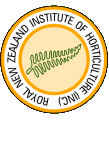|
Conference
2006
Plants as infrastructure

Abstract:
Urban
impervious/greenness maps derived from satellite imagery
STELLA
BELLISS and HEATHER NORTH
Accurate, up-to-date
maps of urban green space and impervious surfaces are important
for planning and monitoring urban development. Such maps are needed
for a number of applications, particularly design of stormwater
systems, air quality modelling, and planning of urban green space
layout for both recreation and wildlife habitat.
We investigated methods
for mapping urban green space and impervious surfaces using multispectral
satellite imagery of Christchurch City. Results were tested for
accuracy against reasonably contemporaneous high resolution aerial
photographs.
We mapped urban impervious
surfaces and green space for the full area of Christchurch City,
using imagery acquired in February 2000. To gain the best accuracy,
we developed a suitable image processing method (using spectral
pixel unmixing) for automated analysis of the satellite images.
We then assessed the accuracy of the resulting impervious surface
maps against the aerial photographs. For this accuracy assessment,
we used 10 tiles of aerial photography, each covering 750 × 500
m, chosen to represent a range of urban land cover types.
Our full-city-coverage
map was derived from medium resolution Landsat Thematic Mapper satellite
imagery (pixel size 30 × 30 m). While higher resolution satellite
imagery is now available, at a price, medium resolution imagery
has been available since the mid-1980s and is thus able to provide
information over a longer timeline.
Percent impervious surfaces
within the test tile areas ranged from 47% to 55% for six different
urban surburbs, 85% for the CBD, 71% for an industrial area, and
18% and 31% respectively for two residential areas on the urban
fringe. Our method was able to quantify percent impervious surface
with an error of not more than 12% in nine cases out of ten, on
a whole-tile basis. The tenth test site was the industrial site
where hard-packed subsoil and gravel were mis-classified as impervious
in the satellite image (pervious in the reference data).
The main source of error
was found to be the huge variation in "greenness" of live vegetation
throughout the city, ranging from drought-stricken grass to lush
trees and gardens. This led to a corresponding variation in quantification
of the non-green component. Current research includes examination
of spring (rather than summer) imagery to reduce this variability
in the green vegetation spectral signature. We believe this should
enable us to fulfil the requirement of the city for greenness:impervious
mapping accuracy to be under 10% at a whole-suburb level. We have
also worked with high resolution (4 × 4 m pixel size) satellite
imagery and will continue mapping from such data sources for situations
where post-2000 time series will suffice.
Stella Belliss and
Heather North
Landcare Research, PO Box 69, Lincoln 8152
Corresponding author:
Email: BellissS@landcareresearch.co.nz
|

